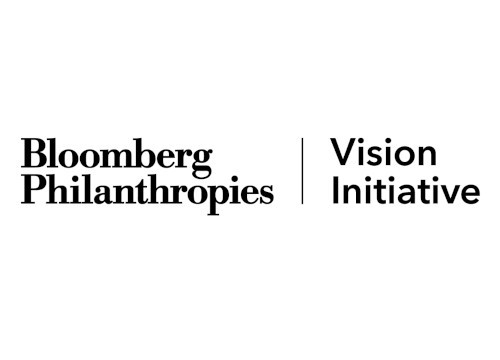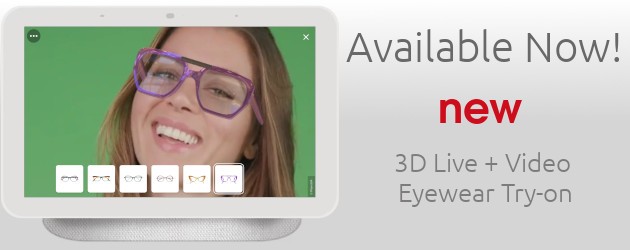Industry News
Bloomberg Philanthropies Launches Ambitious Global Vision Care Initiative
 Bloomberg Philanthropies recently unveiled a bold global programme aimed at closing the vision-care gap in underserved communities with implications for health systems, NGOs and private sector players alike.
Bloomberg Philanthropies recently unveiled a bold global programme aimed at closing the vision-care gap in underserved communities with implications for health systems, NGOs and private sector players alike.
Under the new “Vision Initiative”, the foundation will invest US $75 million to support vision screenings, the distribution of eyeglasses and treatment of cataracts, particularly in low- and middle-income countries, as well as underserved communities in the United States.
The initiative sets out the following key targets:
- Conduct vision screenings for 11.5 million people
- Distribute nearly 7 million pairs of eyeglasses
- Restore sight through 250,000 cataract surgeries
Implementation will be in collaboration with a wide network of partners, including Warby Parker (via its Buy a Pair, Give a Pair programme), Sightsavers, Fred Hollows Foundation, VisionSpring, Aravind Eye Care, Orbis, and institutions such as the Institute for Health Metrics and Evaluation and Johns Hopkins / Wilmer Eye Institute.
The programme will also channel funding into public education campaigns, data systems strengthening, outcome tracking, and efforts to reduce stigma or mistrust around eye-care services (for example, cataract surgery).
“For decades, The Fred Hollows Foundation has spearheaded the profound transformations that come from restoring sight—it truly changes everything,” said Andrea T. Sanseverino Galan, head of The Fred Hollows Foundation USA. “Restoring sight is a smart return on investment; it empowers parents to rejoin the workforce, keeps children in school and learning, and stimulates community economic development. We’re immensely proud to partner with Bloomberg Philanthropies to train ophthalmologists, cataract surgeons, and eye health workers to perform life-changing surgeries and services for people who are needlessly blind in Cambodia and Ethiopia.”
“We are delighted by Bloomberg Philanthropies’ landmark investment in eye health at such a significant scale. This partnership will help the whole sector foster innovation, scale interventions and expand access to eye health services across the world,” said Peter Holland, CEO of the International Agency for the Prevention of Blindness. “Preventing sight loss is one of the world’s most powerful, untapped opportunities to improve quality of life, spur economic growth and meet global development goals. IAPB’s Value of Vision report shows that investment in eye health could boost low and middle-income countries’ economies by almost $450 billion each year.”
From a B2B / institutional perspective, the initiative offers multiple touchpoints of interest:
- Health systems strengthening & infrastructure opportunity
Countries scaling up eye health services will require diagnostic tools, equipment, training programmes, supply chain logistics, and data management platforms — creating demand for suppliers, technology firms, and capacity-building providers. - Public–private collaboration models
The partnership between Bloomberg Philanthropies and Warby Parker underscores a blended model of philanthropic capital, NGO delivery and private-sector muscle. Companies that can integrate social mission with scalability may be well placed to participate. - Data & evaluation emphasis
With a strong focus on monitoring, the initiative may generate new standards or platforms for evaluating health outcomes — a potential avenue for analytics, digital health firms, and evaluation consultancies. - Local market entry and scale
As the programme expands into countries such as Bangladesh, Cambodia, Ethiopia, Kenya and Nigeria (besides the U.S.), there may be opportunities for local and regional firms to partner on delivery, distribution or service models tailored to those markets. - Social impact credentials for corporates
Corporate entities interested in ESG or CSR initiatives may find alignment, especially in crafting vision-access programmes, co-investment opportunities or procurement partnerships.
While ambitious, the programme will also face real-world hurdles:
- Supply chain & logistics in remote or resource-constrained settings can be a bottleneck (e.g. transporting surgical supplies, glasses, or ensuring cold chain where needed).
- Workforce capacity
Training enough ophthalmologists, optometrists and allied eye-health workers in target regions is a significant challenge. - Cultural & trust barriers
In certain communities, cataract surgery and eye care may carry stigma or suspicion; overcoming inertia will require sensitive public education campaigns, a component baked into this initiative. - Sustainability post-funding
After the initial funding period, maintaining services will require integration into national health budgets, reimbursement models or commercial sustainability.



